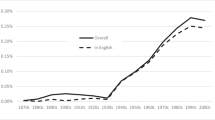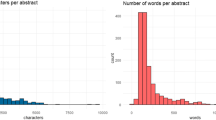Abstract
Sethi and Schepers (J Bus Ethics, 2014, in this Thematic Symposium) have identified an important issue for the global economy: Providing some mechanism for requiring assurance that environmental, social, and corporate governance information provided by a business is accurate and objective. Where they have gone wrong is in trying to change the mission of the United Nations Global Compact (UNGC). From its inception, the UNGC has been clear that its mission is not to provide such assurance. This article first outlines the background for the historic announcement of the UNGC by the then Secretary-General of the UN, Kofi Annan. Then a summary of the major criticisms of the initiative is provided with a focus on the Sethi–Schepers article. Finally, I argue that the mission of the UNGC, to gain consensus in the global community on the shared values and moral norms that will guide the global economy, is being accomplished, although it is a work in progress.
Similar content being viewed by others
Notes
Transparency International (TI) is one of the best resources for information on the struggle against corruption: www.transparency.org. The United Nations Convention Against Corruption (UNCAC) passed by the UN General Assembly on 31 October 2003 is a landmark document for the UNGC. See the TI website for the details.
The UNGC has provided a Global Compact Self-Assessment Tool with 45 questions. The tool enables any company to evaluate whether the ten principles are anchored in the company strategy and to assess the company’s performance in the four areas of human rights, labor, environmental issues, and anti-corruption concerns. See: www.globalcompactselfassessment.org.
The Millennium Development Goals have a target date at 2015, at which time they will be replaced by a more comprehensive agenda called The Sustainable Development Goals. See www.sustainabledevelopment.un.org.
See the UN Global Compact Communication on Progress: www.unglobalcompact.org/COP/.
Social Accountability 8000 is a social certification standard designed in 1997 to assist businesses in implementing human rights standards in the workplace. See www.sa-intl.org/.
The Global Compact suggests that signatories use the GRI framework and relevant questions for their COPs. See www.gobalreporting.org/.
ISO 26000 provides a business with a framework for responsible behavior and action. It is not a set of standards. See www.iso.org/iso/discovering_iso_26000.pdf.
China has become an important partner in the UNGC. See “Global Compact Relaunches China Network,” p. 1, www.unglobalcompact.org/news/172-11-28-2011.
See the blog “Global Compact Critics,” http://globalcompactcritics.blogspot and CorpWatch, www.corpwatch.org/.
This paragraph and the next five closely follow an earlier article of mine: The UN Global Compact: The Challenge and the Promise,” Business Ethics Quarterly 14, no. 4 (2004):7 59–61.
Letter to Kofi Annan, Secretary-General, United Nations, 20 July 2000, from Upendra Baxi, Professor of Law, University of Warwick, UK, and others, p. 1. Available at CorpWatch, www.corpwatch.org/.
The 1991 encyclical letter of Pope John Paul II, Centesimus Annus, makes this central point: “The economy in fact is only one aspect and one dimension of the whole of human activity. If economic life is absolutized, if the production and consumption of goods become the center of social life and society’s only value, not subject to any other value, the reason is to be found not so much in the economic system itself as in the fact that the entire socio-cultural system, by ignoring the ethical and religious dimension, has been weakened, and ends by limiting itself to the production of good and services alone.” John Paul II, Centesimus Annus (Washington, DC: The US Catholic Conference, 1991).
Published in English and Spanish, the Weekly Update of the Business and Human Rights Resource Centre has sections on International issues, Africa, Americas, Asia and Pacific, Europe and Central Asia, and the Middle East and North Africa. It also has a weekly section on “Recent company responses and non-responses” to allegations made about companies’ ESG performance. (http://www.updates@lists.business-humanrihts.org).
“Sensitizing Future Business Leaders: Developing Anti-Corruption Guidelines for Curriculum Change,” www.wiemens.com/sustainability/en/core-topics/collective-action/integrity-initiative/.
The Principles for Responsible Management Education (PRME) is a UNGC program developed by a task force of top academic leaders and launched in 2007. It is designed to incorporate universal values into curricula and research in business schools and has attracted over 500 of the best international business schools. The purpose of business is defined as creating sustainable value for stakeholders. See the website, www.unprme.org. On the website is The PRME Inspirational Guide which features 63 case stories from 47 institutions representing 25 countries and provides a good overview of what business schools are doing.
Global Corporate Sustainability Report: 2013. See also the United Nations Global Compact Annual Review 2010, www.unglobalcompact.org/. There are over 3,000 examples of business advancing the MDGs. See Delivering Results: Moving Toward Scale: Accelerating Progress Toward the Millennium Development Goals www.unglobalcompact.org/.
References
Abrams, F. W. (1951). Management’s responsibilities in a complex world. Harvard Business Review, 29(3), 29–34.
Annan, K. (1999). Secretary-General proposes global compact on human rights, labor, environment, in address to a World Economic Forum in Davos, www.un.org/News/Press/docs/1999/19990201.sgsm6881.html.
Apparel Industry Partnership Agreement. (1997, April 14) www.actrav.itcilo.org.
Business and Human Rights Resource Centre. (2014). http://www.updates@lists.business-humanrihts.org.
Cavanagh, G. (2000). Executives’ code of business conduct: Prospects for the Caux Principles. In O. F. Williams (Ed.), Global codes of conduct (pp. 169–182). Notre Dame: University of Notre Dame Press.
Chandy, L., & Gertz, G. (2011). Poverty in numbers: the changing state of global poverty. Policy Brief 2011-01, Global Economy and Development at Brookings, www.brookings.edu.
Committee for Economic Development. (1979). Redefining government’s role in the market system. New York: CEO.
Donaldson, T. (1989). The ethics of international business. Oxford: Oxford University Press.
Donaldson, T., & Dunfee, T. (1999). Ties that bind: A social contracts approach to business ethics. Cambridge, MA: Harvard University Business School Press.
Duhigg, C., & Greenhouse, S. (2012, March 29). Electronic giant vowing reforms in China plants. The New York Times.
Elkington, J. (1997). Cannibals with forks: The triple-bottom line of 21st century business. New York: Wiley.
Frederick, W. C. (2006). Corporations be good: The story of corporate social responsibility. Indianapolis, IN: Dog Ear Publishing.
Freeman, R. E. (1984). Strategic management: A stakeholder approach. Boston: Pitman.
Fukuyama, F. (1995). Trust: The social virtues and the creation of prosperity. New York: Free Press.
Glavis, A., & Piderit, S. K. (2009). How does doing good matter? Effects of corporate citizenship on employees. Journal of Corporate Citizenship, 36, 51–70.
Global Corporate Sustainability Report. (2013) www.unglobalcompact.org/.
Goodpaster, K. E. (2000). The Caux Round Table Principles: Corporate moral reflection in a global business environment. In O. F. Williams (Ed.), Global codes of conduct (pp. 183–195). Notre Dame, IN: University of Notre Dame Press.
John Paul II. (1991). Centesiumus Annus. Washington, DC: US Catholic Conference.
Kell, G. (2012). 12 years later: Reflections on the growth of the UN Global Compact. Business and Society, 53(31), 31–52.
Kell, G., & Ruggie, J. (1999). Global markets and social legitimacy: The case of the Global Compact. Available at www.yorku.ca/drache/talks/pdf/apd-ruggiekellfin.pdf.
Kinsley, M. (2008). Creative capitalism: A conversation with Bill Gates, Warren Buffet and other economic leaders. New York: Simon & Schuster.
Leisinger, K. M. (2007). Capitalism with a human face. Journal of Corporate Citizenship, 28, 113–132.
Massie, R. K. (2000). Effective codes of conduct: Lessons from the Sullivan and Ceres Principles. In O. F. Williams (Ed.), Global codes of conduct (pp. 287–298). Notre Dame, IN: University of Notre Dame Press.
McManus, S. (1997). The Macbride Principles, www.1umn.edu/humanrts/links/macbride.html.
Nason, R. W. (2008). Structuring the global marketplace: the impact of the United Nations Global Compact. Journal of Macromarketing, 24(4), 418–425.
Paine, L. S. (2003). Value shift: Why companies must merge social and financial imperatives to achieve superior performance. New York: McGraw-Hill.
Palazzo, G., & Scherer, A. (2006). Corporate legitimacy as deliberation: A communicative framework. Journal of Business Ethics, 66(1), 71–88.
Pitts, C., Kerr, M., & Janda, R. (2009). Corporate social responsibility: A legal analysis. Markham: LexisNexis.
Porras, J., & Collins, J. (1997). Built to last: Successful habits of visionary companies. New York: HarperCollins.
Rasche, A. (2009). A necessary supplement: What the United Nations Global Compact is and is not. Business and Society, 48(4), 511–537.
Rasche, A., Waddock, S., & McIntosh, M. (2012). The United Nations Global Compact: Retrospect and prospect. Business and Society, 52(6), 6–30.
Rieth, L., Zimmer, M., Hamann, R., & Hanks, J. (2007). The UN Global Compact in sub-Saharan Africa: Decentralization and effectiveness. Journal of Corporate Citizenship, 7(28), 99–112.
Sethi, S. P., & Schepers, D. H. (2014). United Nations Global Compact: the promise-performance gap. Journal of Business Ethics (in this Special Issue).
Sethi, S. P., & Williams, O. F. (2002). Economic imperatives and ethical values in global business: The South African experience and international codes today. Boston: Kluwer Academic Publishers.
Slob, G., & Kell, G. (2008). Debate: UN Global Compact—Is the compact raising corporate responsibility standards? Ethical Corporation.
Smith, A. (1790). The theory of moral sentiments (6th ed.). London: A Millar.
Smith, A. (1804). The wealth of nations (4th ed.), Ewin Cannan (ed.). London: Methuen.
Tester, S., & Kell, G. (2000). The United Nations and business. New York: St. Martin Press.
Vogel, D. (2005). The market for virtue: The potential and limits of corporate social responsibility. Washington, DC: Brookings Institution Press.
UN Global Compact. (2010). The blueprint for corporate sustainability leadership, www.unglobalcompact.org/docs/news_events/8.1/Blueprint.pdf.
Werhane, P. H. (2000). Business ethics and the origins of contemporary capitalism: Economics and ethics in the work of Adam Smith and Herbert Spencer. Journal of Business Ethics, 24(3), 185–198.
Williams, O. F. (1993). Catholic social teaching: A communitarian democratic capitalism for the new world order. Journal of Business Ethics, 12(12), 919–923.
Williams, O. F. (Ed.). (2000). Global codes of conduct: An idea whose time has come. Notre Dame, IN: University of Notre Dame Press.
Williams, O. F. (2004). The UN Global Compact: The challenge and the promise. Business Ethics Quarterly, 14(4), 755–774.
Williams, O. F. (Ed.). (2008). Peace through commerce: Responsible corporate citizenship and the ideals of the United Nations Global Compact. Notre Dame, IN: University of Notre Dame Press.
Williams, O. F. (2014a). Corporate social responsibility: The role of business in sustainable development. London: Routledge.
Williams, O. F. (Ed.). (2014b). Sustainable development: The UN Millennium Development goals, the UN Global Compact, and the common good. Notre Dame, IN: University of Notre Dame Press.
Yang, M. (2012). The evolution, transmission and hardening of soft laws in corporate social responsibility: focusing on the Northeast Asian Region (China, Japan, and Korea). MA thesis.
Zadek, S. (2004). The path to corporate responsibility. Harvard Business Review, 82(12), 2–10.
Author information
Authors and Affiliations
Corresponding author
Additional information
Further discussion of the mission of the UNGC is found in Oliver F. Williams, Corporate Social Responsibility: The Role of Business in Sustainable Development (London: Routledge, 2013).
Rights and permissions
About this article
Cite this article
Williams, O.F. The United Nations Global Compact: What Did It Promise?. J Bus Ethics 122, 241–251 (2014). https://doi.org/10.1007/s10551-014-2219-3
Published:
Issue Date:
DOI: https://doi.org/10.1007/s10551-014-2219-3




